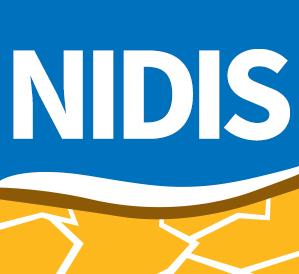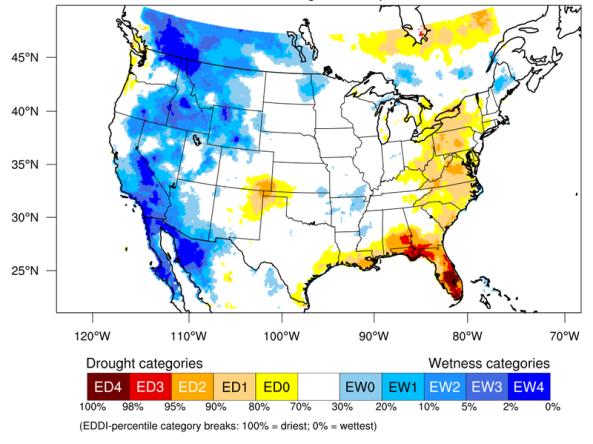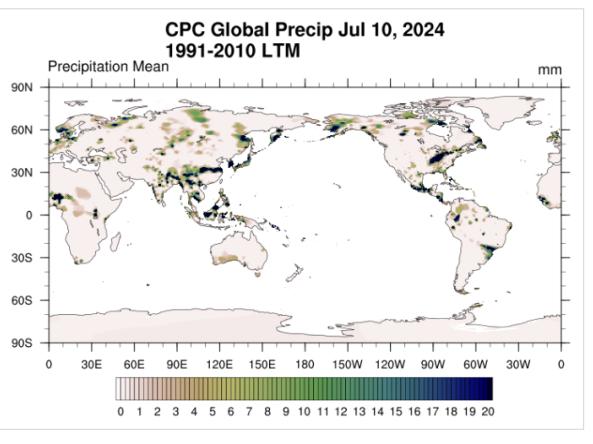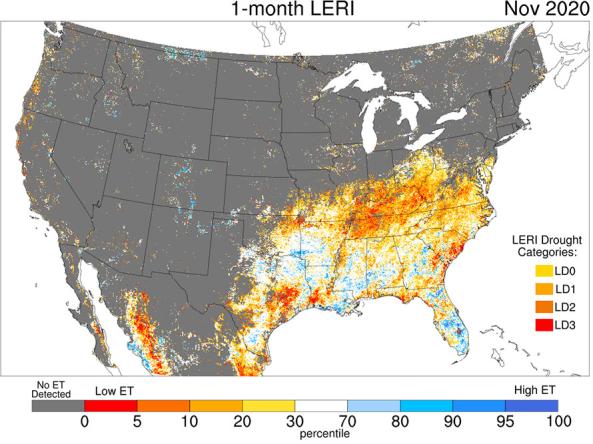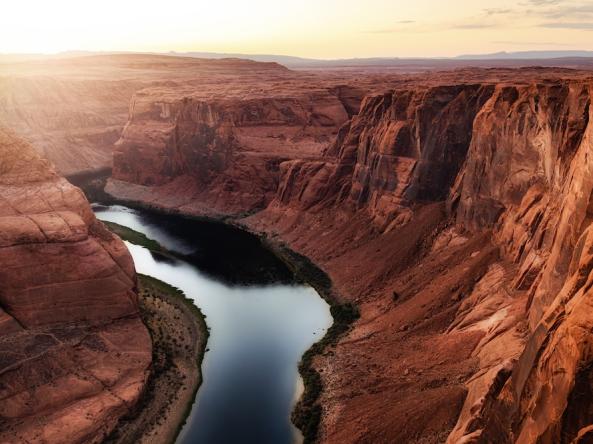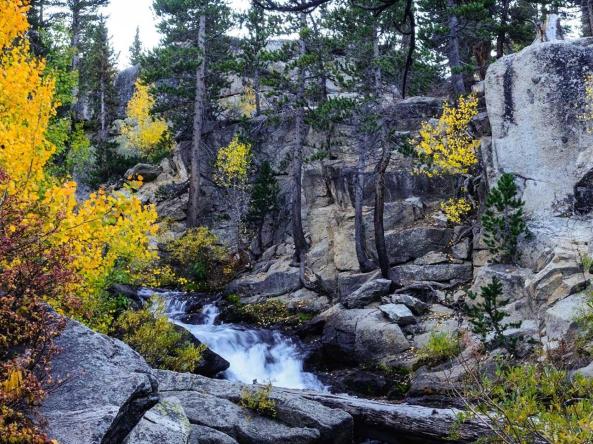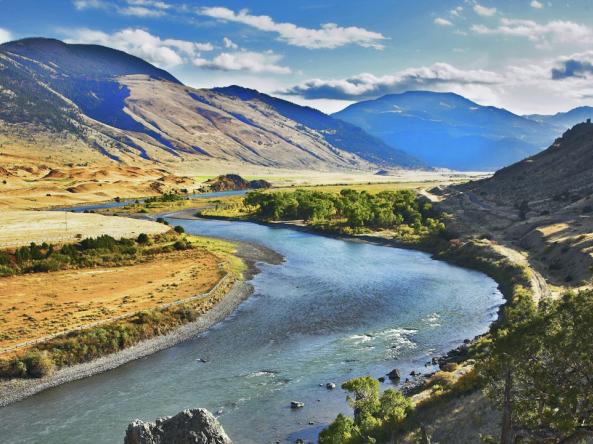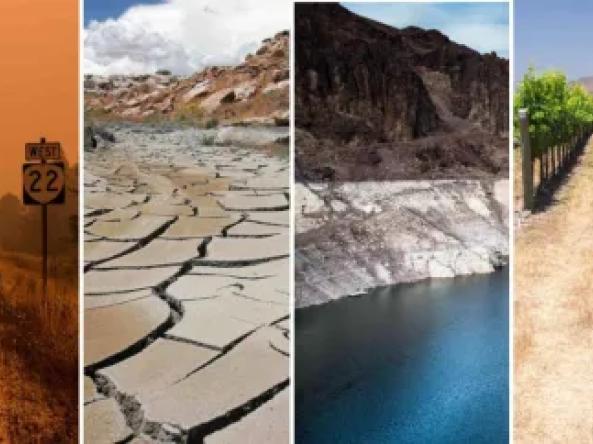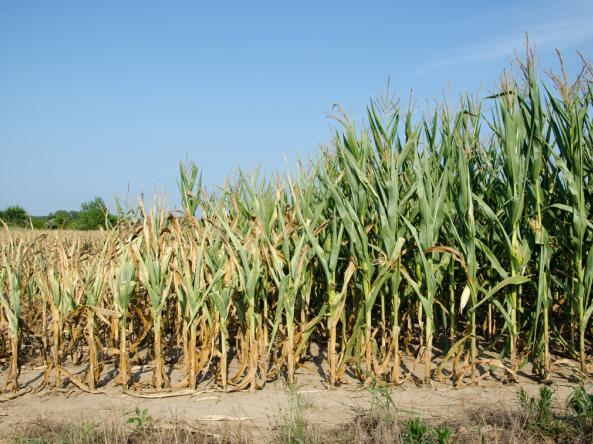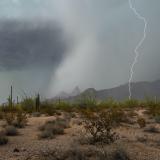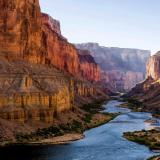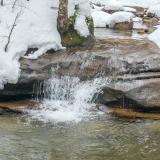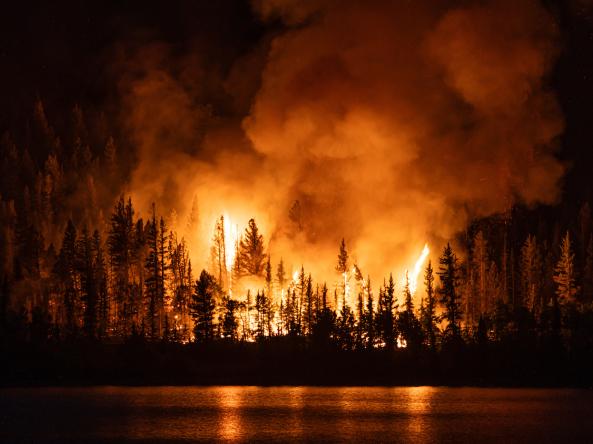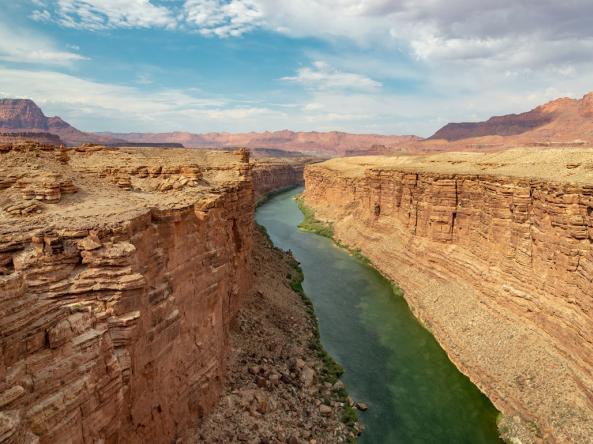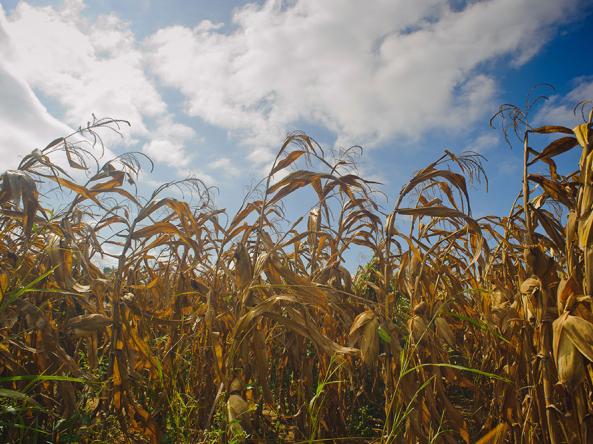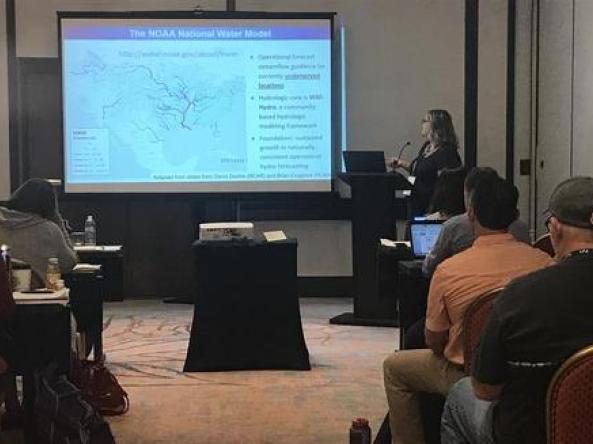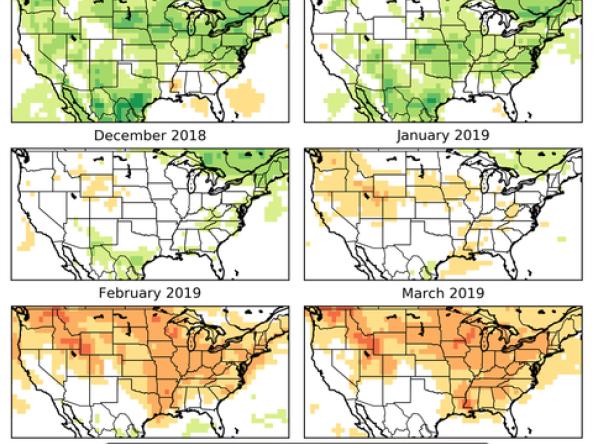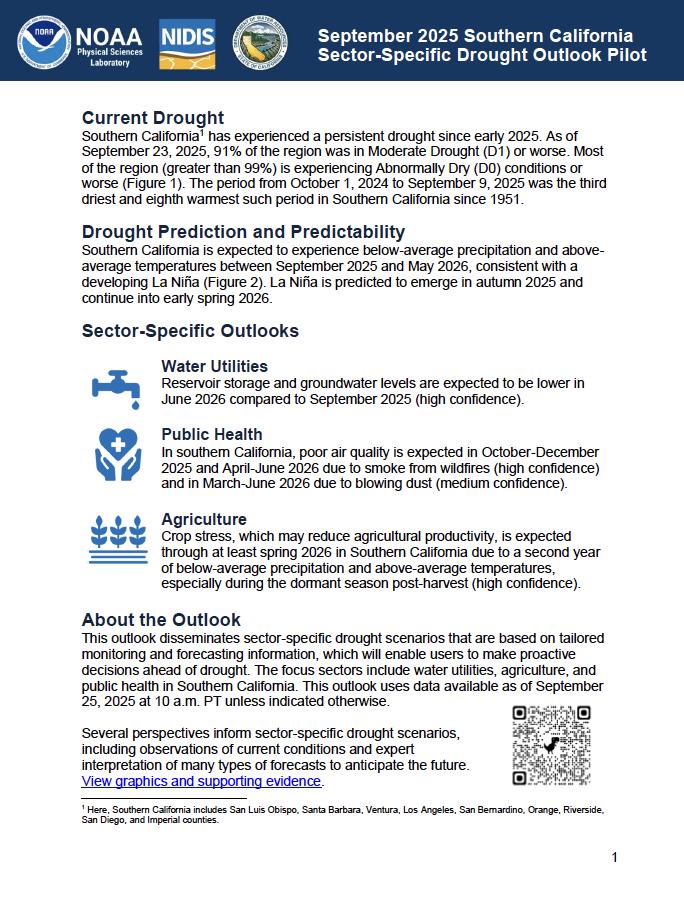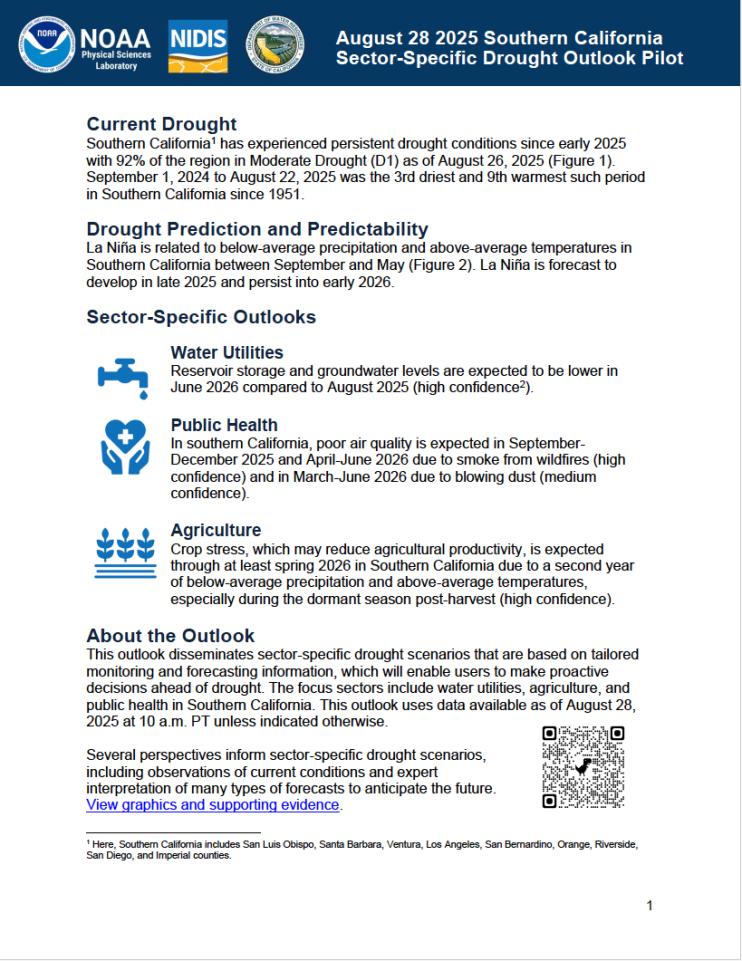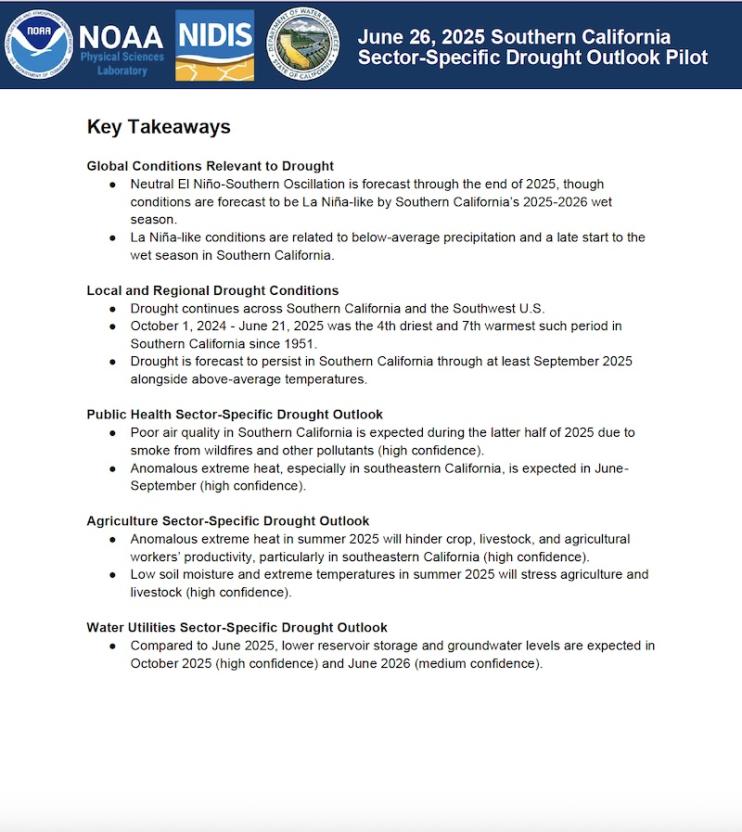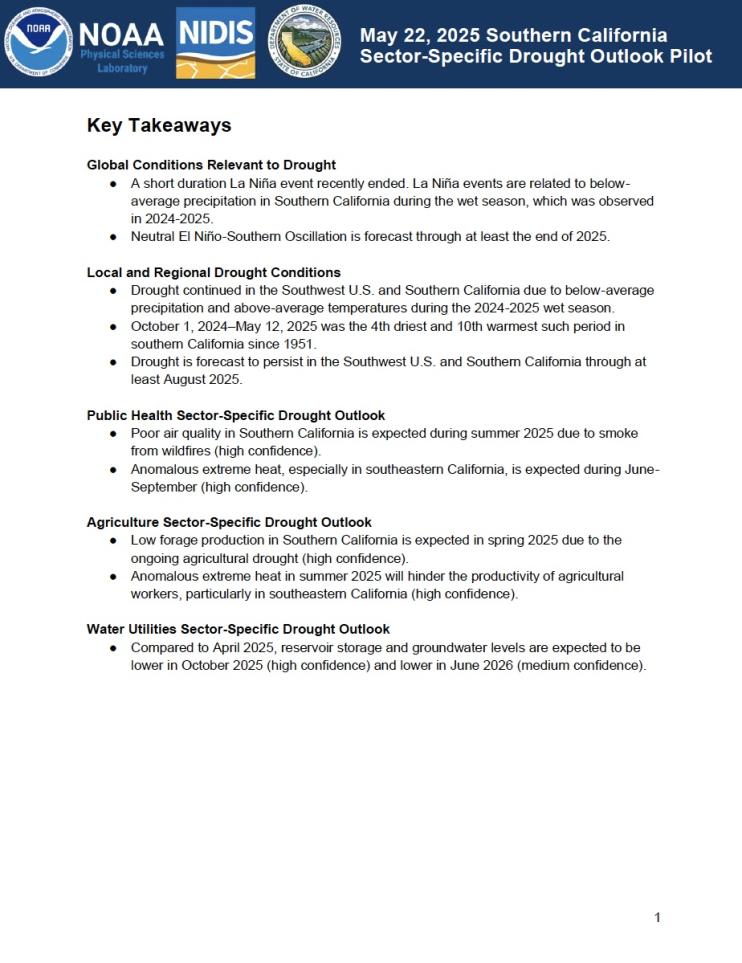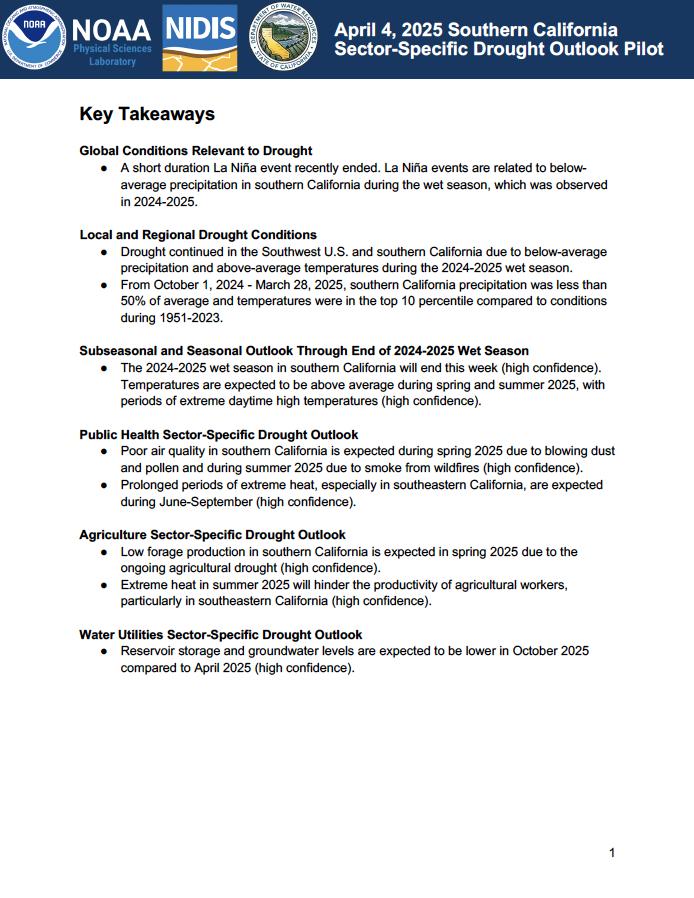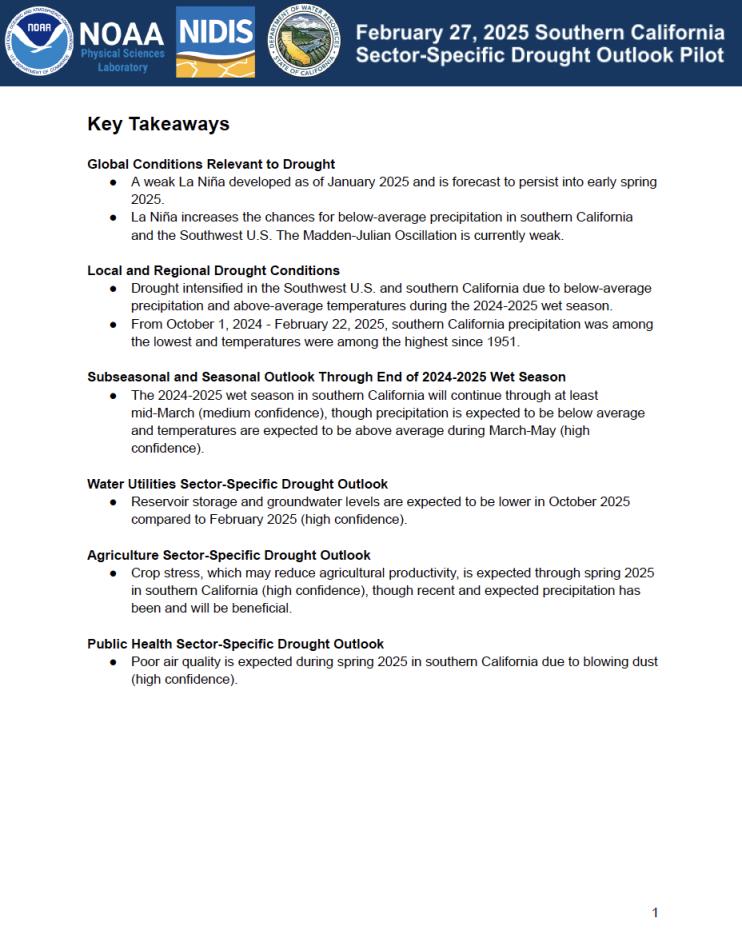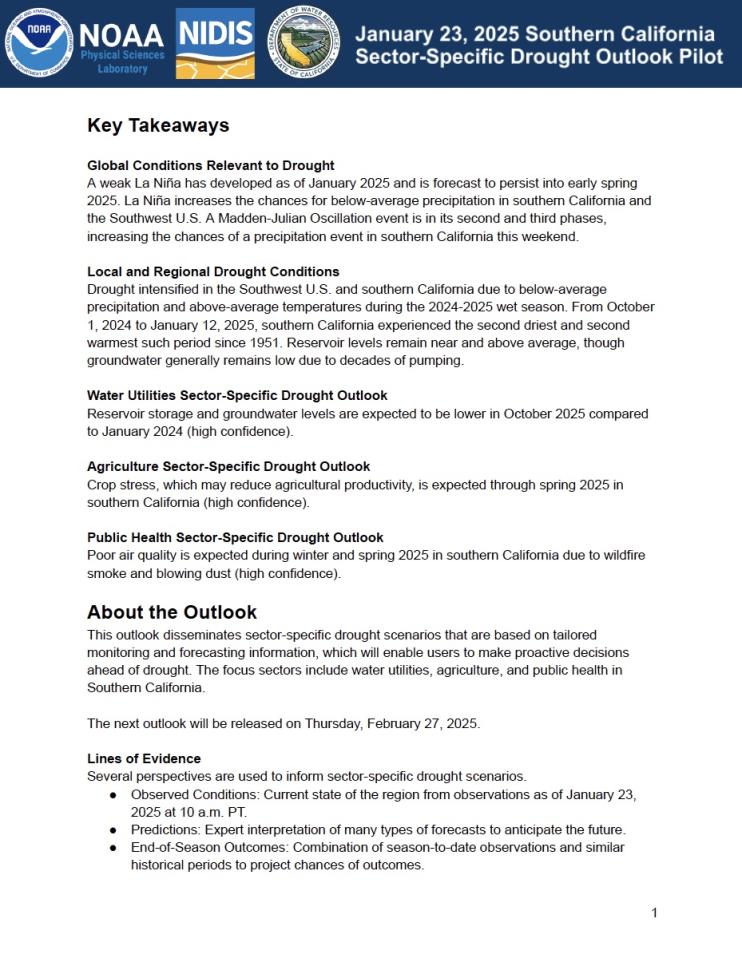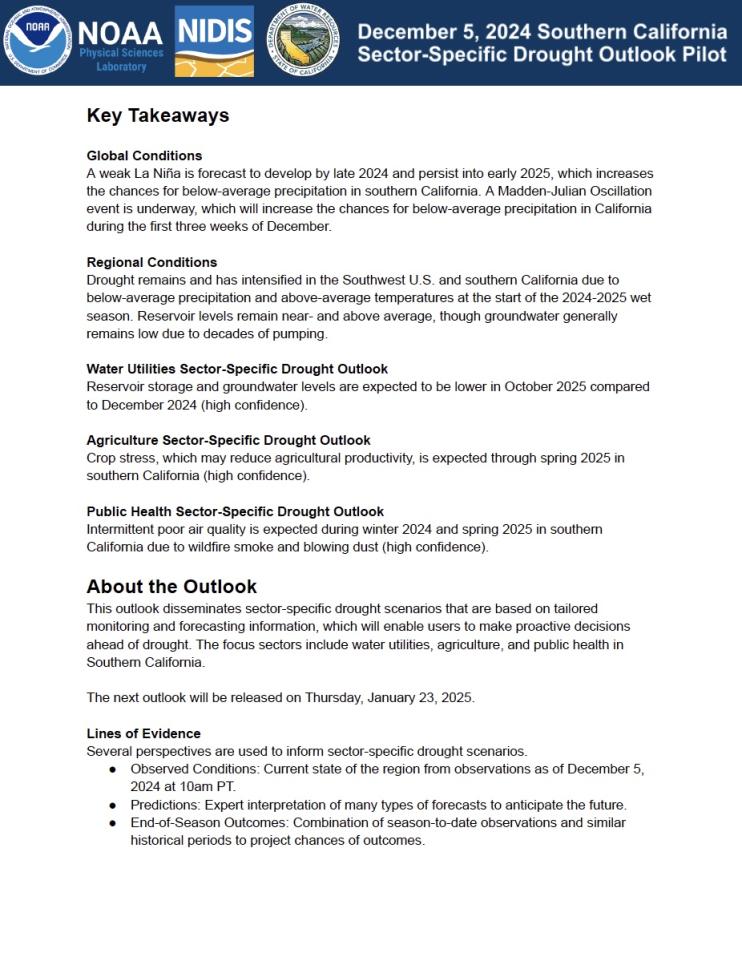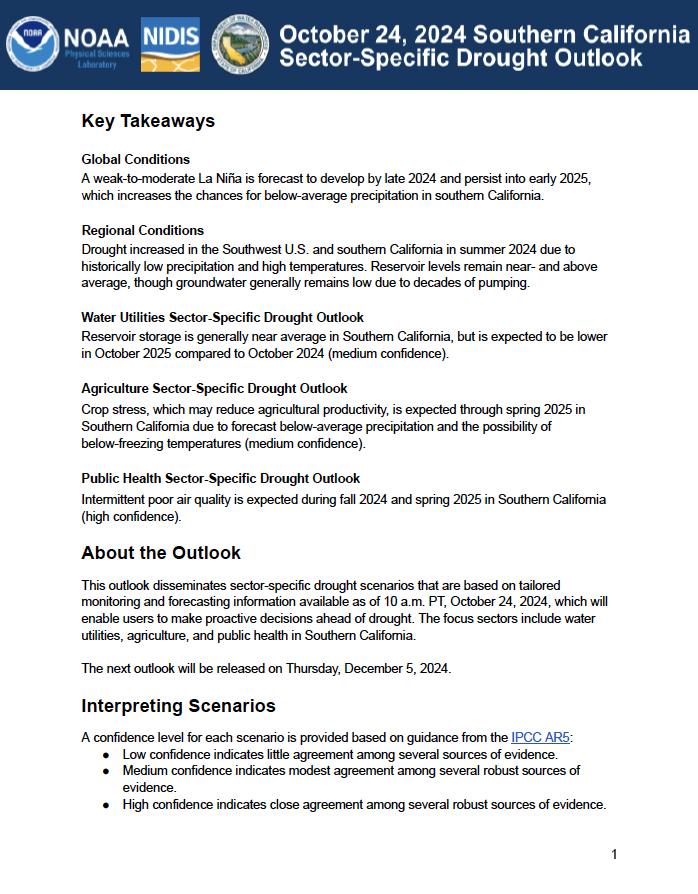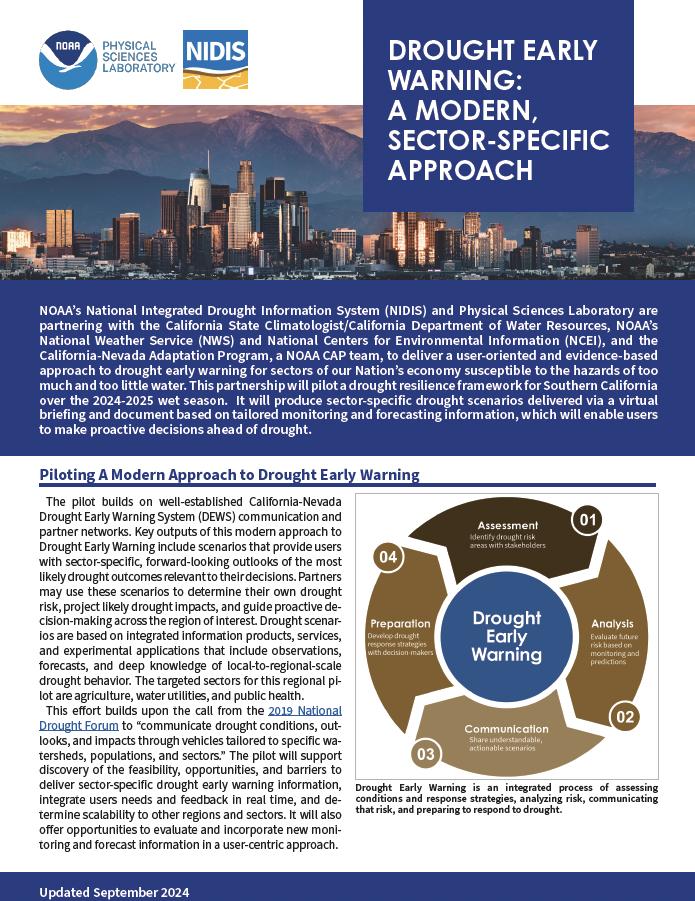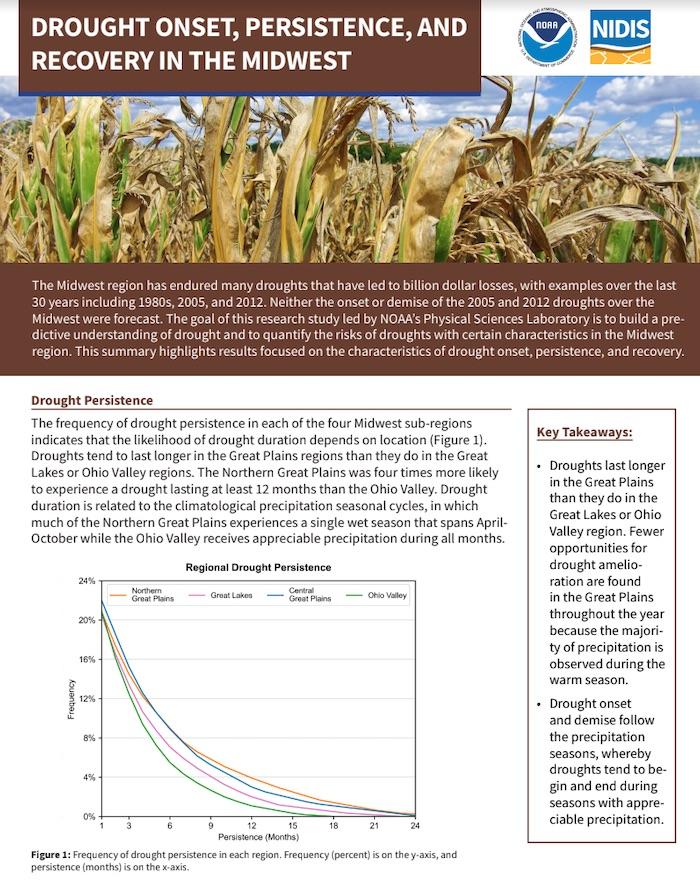Logo
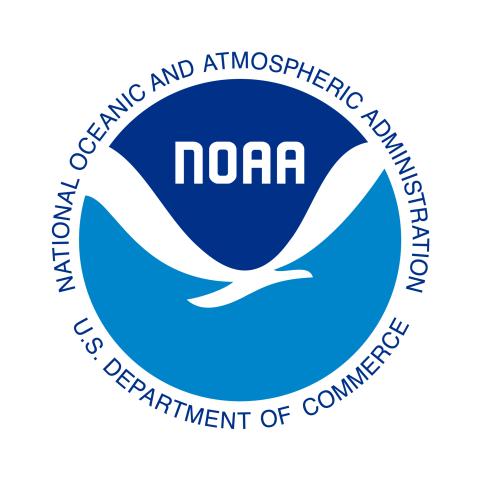
Site Section
Partner
Physical Sciences Laboratory (PSL)
An Agency/Organization of:
Related Data & Maps
The Evaporative Demand Drought Index (EDDI) is an experimental tool that examines how anomalous the atmospheric evaporative demand (E0; also known as "the thirst of the atmosphere") is for a given
Period of Record
1980 - Present
File Format
images
text (ascii)
The National Weather Service's Climate Prediction Center (CPC) produces a Global Unified Daily Precipitation product from 1979-present.
Period of Record
1979–Present
File Format
netcdf-4
The Landscape Evaporative Response Index (LERI) is an experimental drought monitoring and early warning guidance tool that measures the anomaly in the actual evapotranspiration (ETa) from the
Period of Record
2000 - present
File Format
images
netcdf-4
Related Events
Dec
6
2023
May
9
2023
Sep
9
2022
Related Webinar Recaps
Related Drought Status Updates
June 30, 2025
May 20, 2025
Related News
Site Section
News & Events
On December 15–19, the American Geophysical Union (AGU) is hosting its annual meeting in New Orleans, Louisiana. This year, the meeting will focus on the theme, “Where Science Connects Us.” NOAA’s National Integrated Drought Information System (NIDIS) and partners are excited to present on NIDIS-supported drought research and applications at AGU. This includes a review of climate
Site Section
News & Events
This story was updated on Friday, September 5, 2025. From the destructive Dragon Bravo Fire in the Grand Canyon to smokey skies in the Northeast due to Canadian wildfires, discover how drought and fire are impacting the U.S. this summer.Drought and wildfire interact in numerous ways. Many of the conditions that cause worsening drought can increase wildfire potential. Temperature, soil
Site Section
News & Events
The Land of Droughts to Flooding RainsWeather whiplash is the abrupt and intense change from one extreme weather condition to another, such as dramatic temperature swings from hot to cold, heavy snowfall to rapid melt, and, as is common in Texas, a period of prolonged drought followed by flooding. In recent years, weather whiplash events have been observed across the United States. Examples
Site Section
News & Events
Next week, the American Meteorological Society (AMS) is hosting its 105th annual meeting in New Orleans, Louisiana.This year, the meeting will focus on the theme, "Towards a Thriving Planet: Charting the Course Across Scales." The theme focuses on providing “actionable science for society-at-large to chart a future course for a more hopeful and thriving planet” in the context of global
Site Section
News & Events
The American Meteorological Society is hosting its 105th annual meeting on January 12–16, 2025, in New Orleans, Louisiana. This year, the meeting will focus on the theme, "Towards a Thriving Planet: Charting the Course Across Scales."The National Integrated Drought Information System (NIDIS) and partners are excited to co-organize two sessions during this conference:Advances in Communicating
Site Section
News & Events
The American Meteorological Society’s 104th Annual Meeting is fast approaching. This year’s meeting, which will be held on January 28–February 1 in Baltimore, will focus on the theme, "Living in a Changing Environment." This theme centers on “defin[ing] the steps and scientific advances necessary to minimize the impacts of climate change, and to engage policy makers and the public in that
Site Section
News & Events
The American Meteorological Society is hosting its 104th annual meeting on January 28–February 1, 2024, in Baltimore, Maryland. This year, the meeting will focus on the theme, "Living in a Changing Environment."
The National Integrated Drought Information System (NIDIS) is excited to co-chair sessions during the 38th Conference on Hydrology on Advancements in Analysis and Prediction of Drought
Site Section
News & Events
The American Meteorological Society is hosting its 103rd annual meeting on January 8–12, 2023, in Denver, Colorado. This year, the meeting will focus on the theme, "Data: Driving Science. Informing Decisions. Enriching Humanity.”
The National Integrated Drought Information System (NIDIS) and its partners are excited to co-chair several sessions related to drought analysis and prediction, flash
Site Section
News & Events
Since early 2020, the Southwest United States has suffered record low precipitation and near-record high temperatures, gripping the region with an unyielding, unprecedented, and costly drought. This exceptional drought—marked by massive water shortages, destructive wildfires, emergency declarations, and the first ever water delivery shortfall among the states sharing the Colorado River—punctuates
Site Section
News & Events
The 2017 Northern Plains drought sparked wildfires, destroyed livestock, and reduced agricultural production. Neither the drought’s swift onset nor its severity were forecasted. In May 2017, the region was mostly drought-free, and at least average summer precipitation was forecasted. By July 2017, North Dakota, South Dakota, eastern Montana, and the Canadian prairies were experiencing severe to
Site Section
News & Events
Drought can have a significant impact on the management and operations of water utilities, from loss of water supply and poor source water quality to increased demand from customers and reduced revenues. Changing conditions in precipitation, snowpack, soil moisture, temperature, and evapotranspiration must be well monitored and better forecasted to provide water managers early warning of drought
Site Section
News & Events
The Evaporative Demand Drought Index, also known as EDDI, is an experimental drought monitoring and early warning tool that looks for drought using atmospheric evaporative demand (also known as the “thirst of the atmosphere”). So far, EDDI maps and data have been made available for near-real-time and historical monitoring; now, with the help of the NOAA-National Centers for Environmental
Related Documents
Document Date
December 2025
Document Date
September 2025
Document Date
August 2025
Document Date
June 2025
Document Date
May 2025
Document Date
April 2025
Document Date
February 2025
Document Date
January 2025
Document Date
December 2024
Document Date
October 2024
Document Date
September 2024
Document Date
February 2022
Related Research

